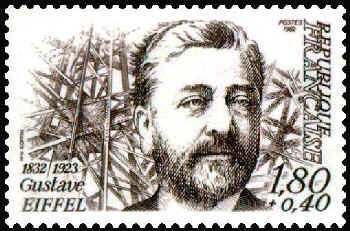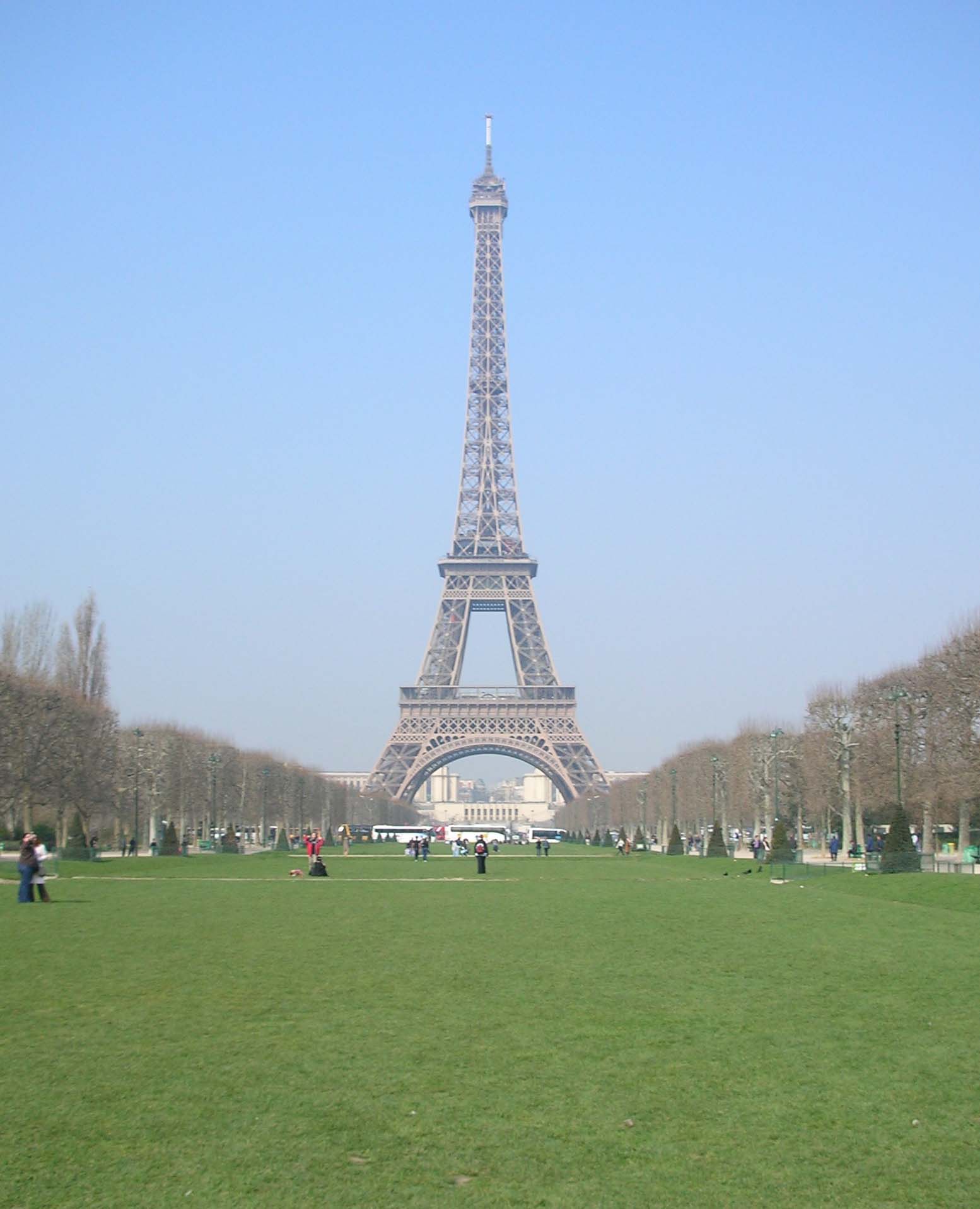
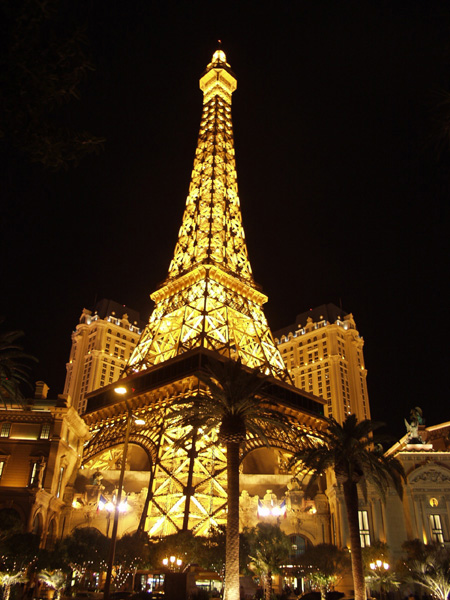
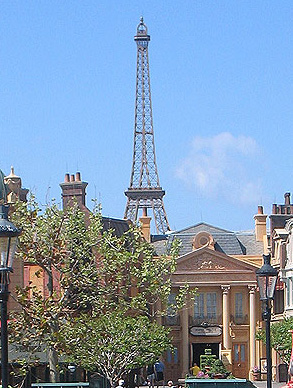



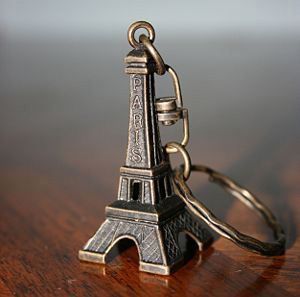


Within the city of Paris, the Eiffel Tower is centralized as a symbol of postmodern communication and travel,
necessary for the use of cell phones, television, and serving as a beacon of light to planes bringing
abroad and natives home. Outside of the French capital, the Tower exists as a sign for Paris and France. The Eiffel Tower at
Paris Las Vegas provides a semi-authentic experience of what visiting the original would be like.
Visitors can ride to the top, and take pictures which appear as if they actually went to Paris. This
use of the Tower as an institutional technology remains true to Vegas' guiding principle - "What
happens here, stays here." If visitors want to effectively simulate a trip to Paris (or Venice,
or Rome, or New York), the institutional apparatus of Vegas provides the tools for them to do so.
At Epcot, the Eiffel Tower validates the existence of France within the World Showcase. It does not
have to appear completely authentic, because Disney-goers expect an experience where "dreams come true."
In a dream world, the Eiffel Tower does not have to look exactly like the real thing, as long as it
is close enough to be believable (just like we can have dreams about ourselves where we look the same,
only better). The Disney Eiffel Tower only needs to exist to make the Disney France exist. Without it,
the syntagmatic signs with "France" have no symbol from which they obtain value and meaning.
Because the Tower's replications are similar in symbolic meaning, it is not easily disassociated
from being a synecdochal sign for Paris. Even removing the Tower or one of its replications from
its location does not change its meaning.



"Ultimately...the contradiction between the desire to grasp through mediation this depleting supply of authenticity, and representational technologies' ability to exceed, supplant, or invent the real produces the very textual cracks that provide such a unique perspective on contemporary experience in a postmodern age" (Strain 2).Succinctly, the fact we have the ability to challenge authenticity with inventions of "the real" is progressive. It provides a stance otherwise not explored. Though I agree this offers a window into an interesting world of theory, I do not think of it as optimistically as Strain.



My opinion, from the problematic side of the coin, is more in line with scholars like Greg Richards, who claims the "resources associated with cultural tourism have expanded from the largely fixed, tangible heritage of the past toward the mobile, intangible products of contemporary culture" (Richards 2). Richards goes further to expand upon why this is more dangerous than desirous:
"If globalization is viewed in terms of an increasing integration of economic, social, and cultural systems, then tourism can be seen both as a cause and an effect of globalization processes...Not only do tourists travel to consume cultural resources in every corner of the globe, but those resources are themselves becoming more mobile, as art exhibitions embark on global tours, musicals are replicated on different continents, and the process of 'McGuggenheimization' developes globally branded museums" (Richards 3).From this position, the reproduction of monuments like the Eiffel Tower contributes to a hegemonic movement of globalization. Gustave Eiffel might have said the Eiffel Tower was made by everyone for everyone, but I do not think it was intended for the purposes of mass reproduction. In fact, I think this demystifies a monument intended to be strikingly beautiful and breath-taking in its original form.



It is eerie to consider where the postmodern ability could take us. An important question to consider
is whether or not the symbolic power of monuments like the Eiffel Tower can live through their
reproductions, without the presence of the original. If the actual Eiffel Tower, the London Bridge,
the Sphynx pyramids, and others were destroyed, would their replications operate in the same way or
would the sites where the original used to be become necessary to classifying a sufficient experience?
It is my personal assumption that without the ideological power of the original's presence somewhere
in the world, the replications deplete in experience value. This is mainly because the Paris Las Vegas
hotel and France section of Epcot are validated as being Parisian due to their Eiffel Tower
replications. However, if the real Eiffel Tower no longer existed, these locations would not offer
authentic representations of Paris. In fact, to be the real deal, they would have to destroy the very
thing by which they are now identified as true.
Simply put, the Eiffel Tower holds enough symbolic weight in each of these locations, that the success
of their representations depend on it. Despite this, without the presence of the Tower in the actual
world, the falsity of experiencing these replications is exposed. They would come to represent a
Paris that used to be, but not a Paris that is. Although Epcot is already slightly skewed in this
direction with a depiction of France during the Renaissance, the Eiffel Tower within in it maintains
a position as a sign and important aspect of a place-myth that could represent present-day Paris
if the buildings around it were to change. The Tower in this setting is aged by its surroundings, not
by its presence.



"In the spring of 2002, the flamboyant hip-hop rap star 'P-Diddy,' who was now designing clothes, spent four days in Paris. Soon after his arrival, he made his first visits to the Louvre and Versailles, which he called 'some-awe-inspiring-shit.' Then, as his limousine sped through the half-empty streets of Paris by night, he told a reporter, 'This city is so fly. Look at the clocks and the windows and the lights. And those little Smart cars. Even the buses are cool. Can you find a speck of dirt or any garbage on the ground? It's amazing. These people have the food, the clothes, the love. The city is just mad beautiful.' He'll always have Paris," and the Eiffel Tower (Levenstein ix, 288).No matter how authentic the replications are, no matter how far the Eiffel Tower can travel physically and metaphorically, the Paris P-Diddy describes cannot be replicated. The Eiffel Tower cannot symbolically diffuse it into any given location. Although the reproductions validate Parisian representations, they are not real. They are not genuine. They are not the real place. However, they do provide viewers with the sense of been there, done that, got the signfication - and for many, that's more than enough.
